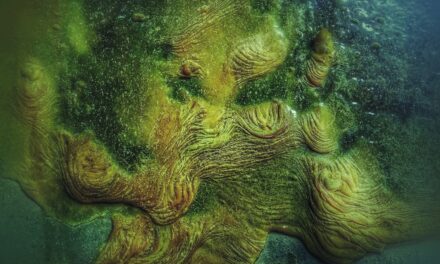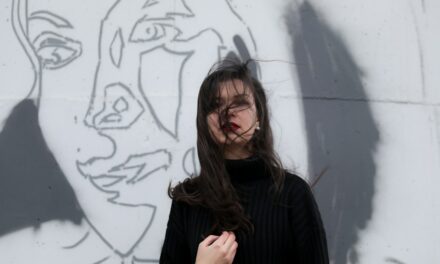Guido Reni, born in 1575 in Bologna, Italy, emerged from a milieu rich in artistic tradition. His early life was steeped in the vibrant culture of the Italian Renaissance, a period that celebrated humanism and the revival of classical ideals. Reni was the son of a painter, which undoubtedly influenced his path towards the arts.
At a young age, he was enrolled in the Accademia di Belle Arti in Bologna, where he honed his skills under the tutelage of prominent artists such as Denis Calvaert and the Carracci brothers. This foundational training provided him with a robust understanding of composition, colour theory, and the techniques that would later define his oeuvre. Reni’s formative years were marked by a relentless pursuit of excellence.
He absorbed the teachings of his mentors while also developing a keen interest in the works of the great masters, including Raphael and Michelangelo. His early exposure to the Baroque style, characterised by dramatic expressions and dynamic compositions, would later inform his own artistic voice. By the time he reached adulthood, Reni had already begun to establish himself as a promising talent within the artistic community of Bologna, setting the stage for his future achievements.
Summary
- Guido Reni was born in Bologna, Italy in 1575 and received his early training in the Carracci Academy.
- Reni rose to fame and success in Rome, where he became known for his graceful and elegant style, particularly in his religious and mythological paintings.
- His style was influenced by the works of Raphael and Carracci, and he was known for his use of soft, luminous colours and idealised figures.
- Some of Reni’s major works include “The Crucifixion of St. Peter” and “The Aurora”, and he received numerous commissions from the papacy and other prominent patrons.
- Reni’s legacy and impact on art history can be seen in the lasting influence of his style on later Baroque and Rococo artists, as well as in the continued admiration for his work in the present day.
Rise to fame and success
Artistic Innovation in Rome
In this vibrant environment, he quickly garnered attention for his exceptional talent and unique approach to painting. His ability to blend classical ideals with the emotive qualities of Baroque art resonated with patrons and collectors alike.
Distinguishing Features
Reni’s work was characterised by its clarity of form and luminous colour palette, which distinguished him from his contemporaries. As his reputation grew, Reni received numerous commissions from influential patrons, including members of the clergy and nobility. His paintings adorned churches and palaces, elevating his status within the artistic hierarchy of Rome.
Notable Works and Legacy
Notable works from this period include “The Archangel Michael” and “The Virgin with Child,” both of which exemplify his mastery of composition and ability to convey deep emotional resonance. By the time he returned to Bologna in 1620, Reni had firmly established himself as one of the leading painters of his time, enjoying both financial success and widespread acclaim.
Style and influences
Reni’s artistic style is often described as a harmonious blend of Baroque dynamism and classical restraint. His works are characterised by their clarity, elegance, and an almost ethereal quality that sets them apart from the more dramatic tendencies of his contemporaries. Influenced by the works of Raphael, Reni adopted a refined approach to form and colour, favouring soft lines and a delicate palette that imbued his subjects with a sense of grace and serenity.
This stylistic choice not only reflected his admiration for classical ideals but also allowed him to create compositions that resonated with viewers on an emotional level. In addition to Raphael, Reni drew inspiration from other artists such as Caravaggio and Titian. While he admired Caravaggio’s use of chiaroscuro and dramatic lighting, Reni’s interpretation was more subtle, favouring a softer illumination that enhanced the beauty of his figures without overwhelming them.
This unique synthesis of influences resulted in a distinctive style that appealed to both religious and secular patrons. Reni’s ability to navigate these diverse influences while maintaining his artistic identity solidified his position as a pivotal figure in Baroque art.
Major works and commissions
Throughout his illustrious career, Reni produced a remarkable body of work that includes some of the most celebrated paintings of the Baroque period. Among his major works is “The Last Judgment,” a monumental altarpiece commissioned for the church of San Gregorio in Rome. This ambitious project showcases Reni’s mastery of composition and ability to convey complex narratives through visual storytelling.
The painting is notable for its dynamic arrangement of figures, each imbued with distinct emotions that reflect their fates in the afterlife. Another significant work is “Saint Sebastian,” which exemplifies Reni’s skill in portraying human suffering with sensitivity and grace. The painting captures the moment of Sebastian’s martyrdom, yet it is rendered with an almost serene beauty that invites contemplation rather than horror.
Reni’s ability to evoke empathy through his subjects is a hallmark of his style, making his works resonate deeply with viewers. His commissions extended beyond religious themes; he also created portraits and mythological scenes that further showcased his versatility as an artist.
Legacy and impact on art history
Reni’s influence on art history is profound and enduring. His unique approach to composition and colour not only shaped the trajectory of Baroque painting but also left an indelible mark on subsequent generations of artists. His ability to blend classical ideals with emotive expression paved the way for later movements, including Neoclassicism and Romanticism.
Artists such as Jean-Auguste-Dominique Ingres and Eugène Delacroix drew inspiration from Reni’s work, incorporating elements of his style into their own practices. Moreover, Reni’s legacy extends beyond individual artists; he played a crucial role in establishing Bologna as a significant centre for Baroque art. His success inspired a new generation of painters who sought to emulate his techniques and themes.
The Academy of Fine Arts in Bologna became a hub for aspiring artists, fostering an environment where Reni’s principles could flourish. As such, Reni’s impact on art history is not merely confined to his own oeuvre but encompasses a broader cultural shift that reverberated throughout Europe.
Personal life and relationships
Reni’s personal life was marked by both triumphs and tribulations, reflecting the complexities often inherent in the lives of great artists. He was known for his somewhat reclusive nature, preferring solitude over social engagements. This inclination towards introspection may have contributed to the depth of emotion present in his work.
Despite his success, Reni faced challenges in maintaining relationships with patrons and fellow artists alike. His perfectionist tendencies sometimes led to conflicts over commissions, resulting in strained partnerships. In terms of romantic relationships, little is documented about Reni’s personal affairs.
It is believed that he remained unmarried throughout his life, dedicating himself entirely to his art. This singular focus may have been both a source of strength and isolation for him. The absence of familial ties allowed him to devote himself fully to his craft; however, it also meant that he navigated the complexities of fame without the support system that often accompanies personal relationships.
Critical reception and controversies
Reni’s work has been met with both acclaim and criticism throughout history. During his lifetime, he was celebrated as one of the foremost painters in Italy, yet some contemporaries questioned his departure from the more dramatic elements typical of Baroque art. Critics argued that Reni’s emphasis on beauty sometimes overshadowed narrative depth, leading to debates about the value of aestheticism versus emotional engagement in art.
In later centuries, Reni’s reputation fluctuated as art movements evolved. While he was revered during the 17th century, subsequent generations grappled with reconciling his style with emerging trends such as Romanticism and Impressionism. Some critics dismissed him as overly sentimental or decorative, while others recognised the technical brilliance underlying his compositions.
This dichotomy reflects broader shifts in artistic values over time, illustrating how perceptions of an artist can change dramatically based on cultural context.
Reni’s lasting influence on art and artists
The enduring legacy of Guido Reni is evident in the works of countless artists who followed in his footsteps. His emphasis on beauty, grace, and emotional resonance continues to inspire contemporary painters seeking to evoke similar qualities in their own work. The principles he established regarding composition and colour theory remain relevant today, serving as foundational concepts for art education worldwide.
Moreover, Reni’s influence extends beyond traditional painting; his techniques have permeated various forms of visual art, including sculpture and illustration. Modern artists often reference Reni’s work when exploring themes related to beauty and emotion, demonstrating how his vision transcends time and continues to resonate with audiences across generations. In this way, Guido Reni remains not only a pivotal figure in Baroque art but also a lasting source of inspiration for artists striving to capture the complexities of human experience through their creations.
For those interested in learning more about the techniques used by artists like Guido Reni, there is a helpful article on layering techniques in mixed media. This article explores how artists can use paper, fabric, and found materials to create depth and texture in their work, much like Reni did in his own paintings. By understanding these techniques, aspiring artists can gain a deeper appreciation for the skill and artistry of masters like Guido Reni.
FAQs
Who was Guido Reni?
Guido Reni was an Italian painter of the Baroque era, born in Bologna in 1575. He was known for his religious and mythological paintings, as well as his skill in creating dramatic compositions and use of light and shadow.
What are some famous works by Guido Reni?
Some of Guido Reni’s most famous works include “The Assumption of the Virgin”, “Saint Michael Archangel”, “Aurora”, and “Atalanta and Hippomenes”. These paintings are renowned for their beauty, emotion, and technical skill.
What was Guido Reni’s artistic style?
Guido Reni was known for his graceful and elegant style, characterized by soft, delicate brushwork and a focus on idealized beauty. He was also skilled in creating dynamic compositions and using light and shadow to create dramatic effects.
What influence did Guido Reni have on the art world?
Guido Reni was a highly influential artist in his time, and his work had a significant impact on the development of Baroque art. His style and techniques were admired and emulated by many artists, and he was considered one of the leading painters of his era.
What is Guido Reni’s legacy?
Guido Reni’s legacy is that of a masterful painter who left a lasting impact on the art world. His works continue to be admired and studied for their beauty and technical skill, and he is remembered as one of the great artists of the Baroque era.


